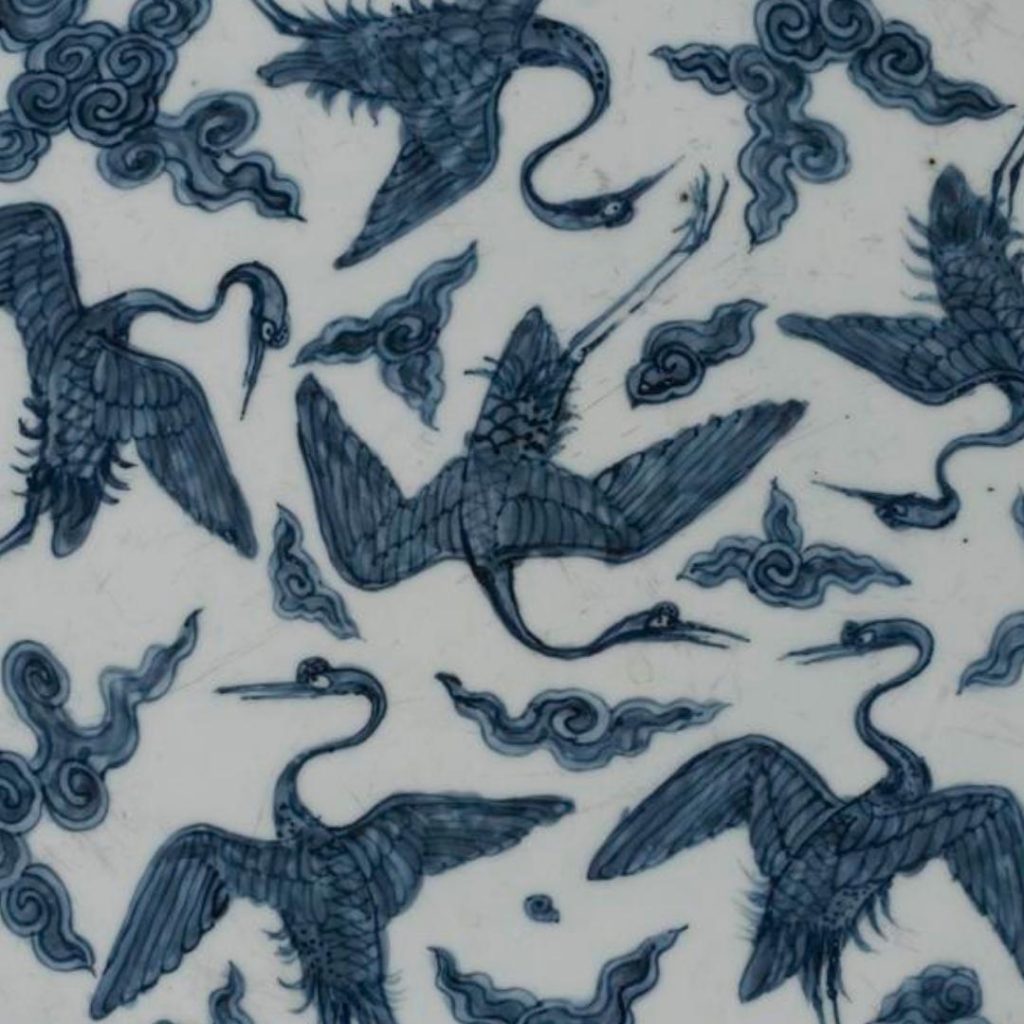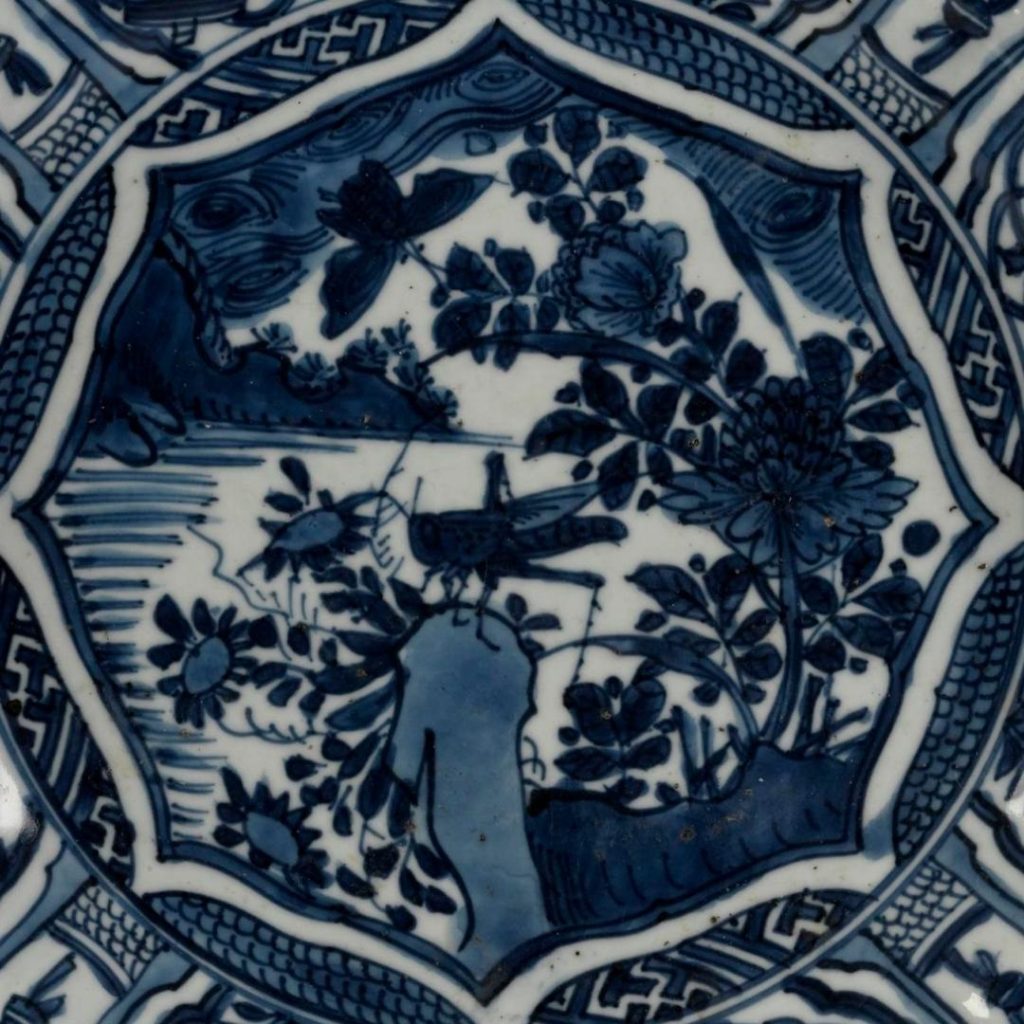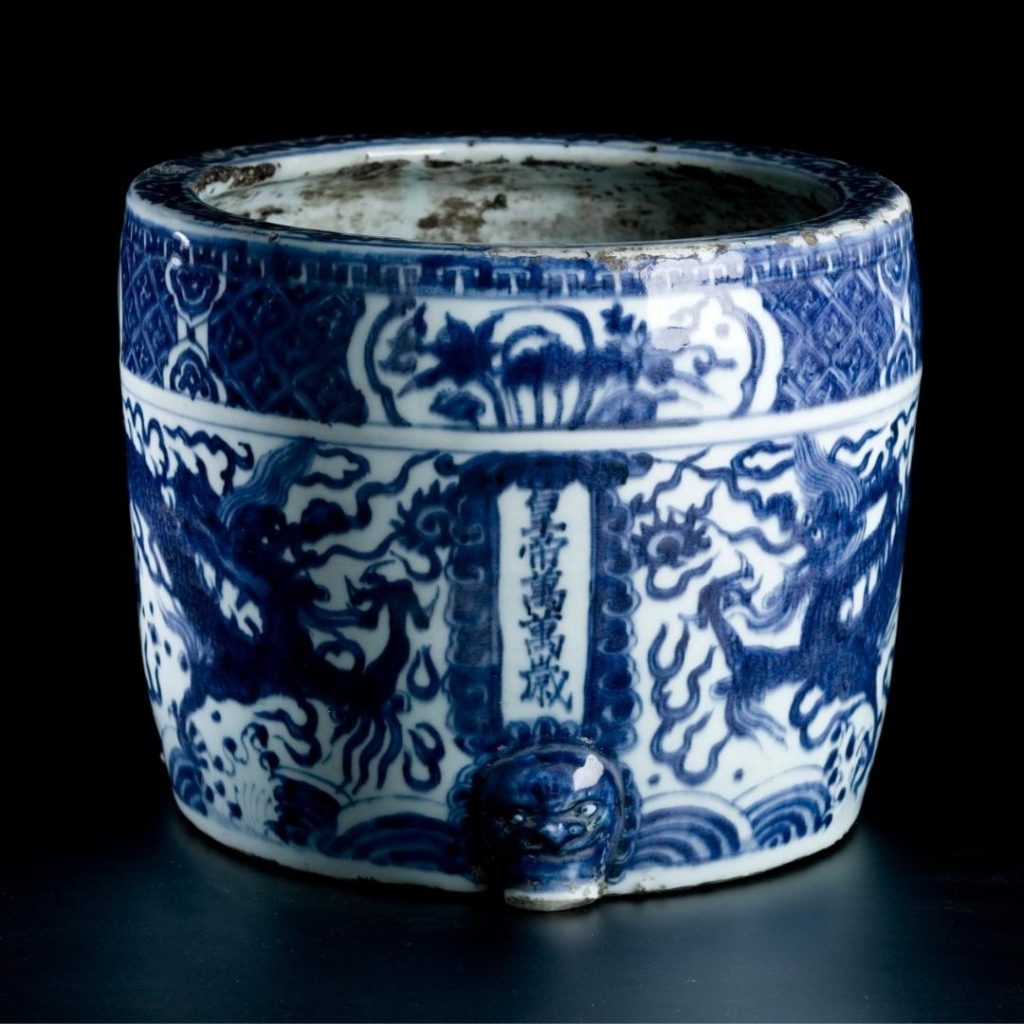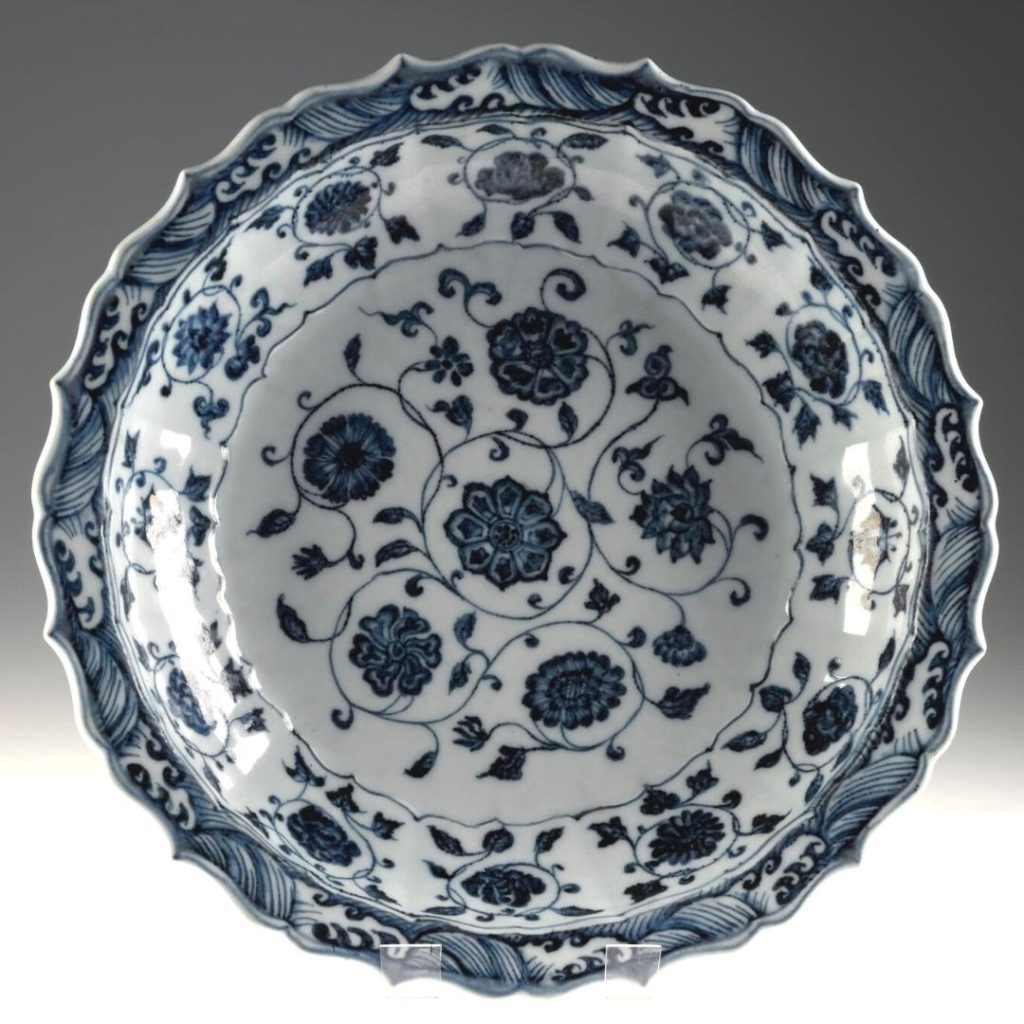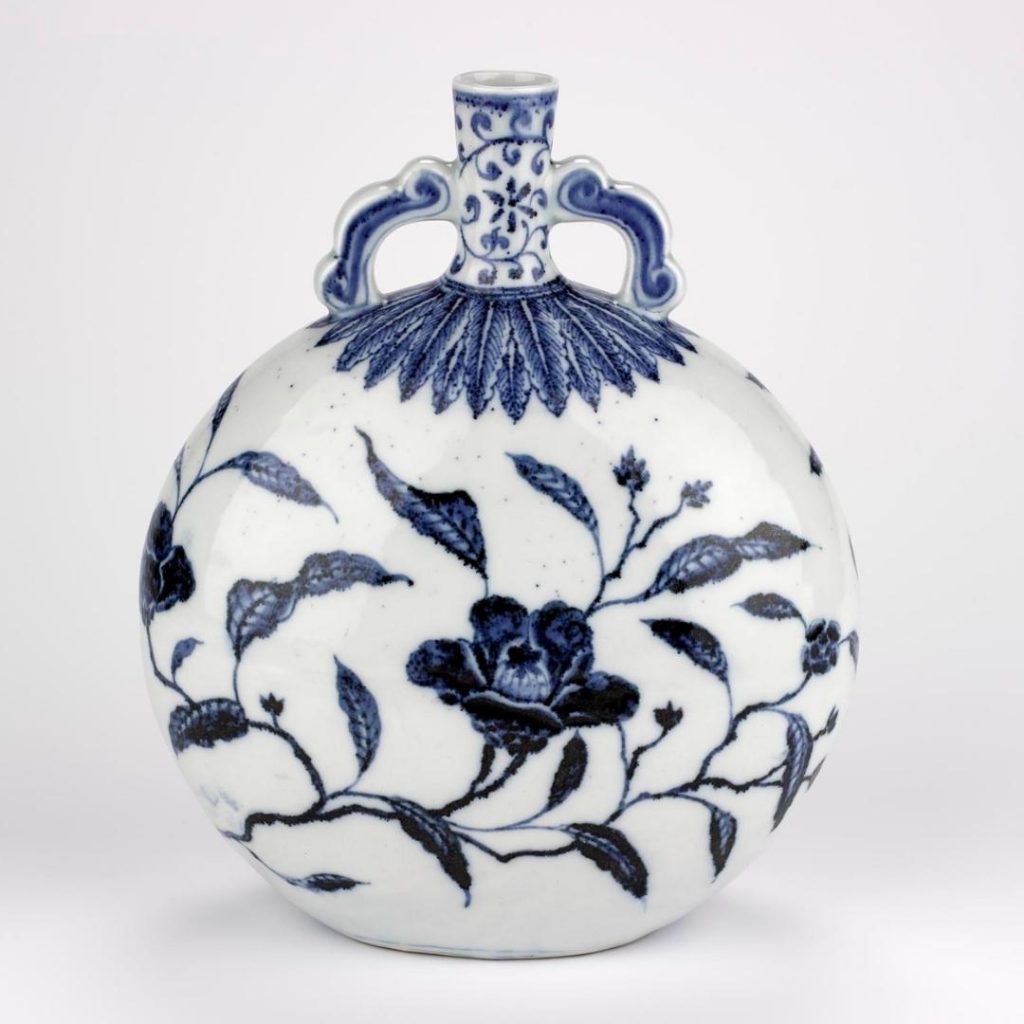Ceramic objects are useful in day-to-day life and may also be put on display, for example in people’s homes, yet they are more than just functional or decorative. They can also tell stories of manufacturing, taste and international trade. National Museums Scotland has a large and important but little-known Chinese ceramic collection. We recently embarked on a Review project to uncover some of its hidden stories.
In September 2021, a long-planned project entitled ‘Chinese Ceramics Review’ took place at the National Museums Collection Centre in Edinburgh. Generously funded by the Confucius Institute at the University of Glasgow, we were honoured and delighted to have Rose Kerr, an internationally renowned Chinese ceramic specialist, working with the curatorial team for a week.
We systematically reviewed over 200 pre-selected pieces. Through this process, we have not only studied pieces from China’s major great ages of ceramic production but also uncovered the depth and diversity of a national collection accumulated over the last 170 years via purchases, gifts and bequests.
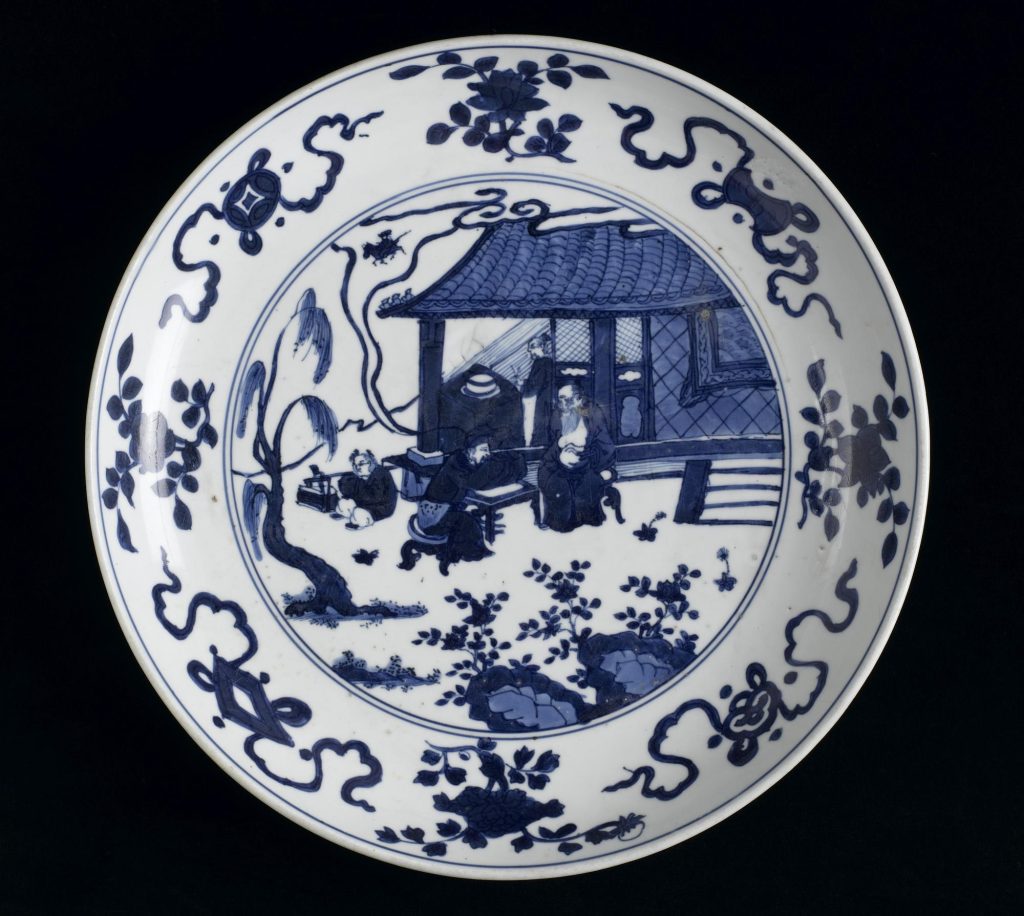
Ming ‘blue and white’
Many of the porcelains in our collections fall under the category of ‘blue and white’ porcelain. This style is closely associated with the Ming dynasty (AD1368-1644). This was an age when techniques for making ‘white porcelains with underglaze blue’ (the formal name for the widely known ‘blue and white’) reached proficiency in mass production.
The vivid blue colour comes from cobalt, an expensive pigment. The quality of the cobalt, as well as the processes used in its application and firing, produced different shades of blue. The most sought-after cobalt ore at the time was imported to China from West Asia, specifically from what is now Iran and Syria. The high quality of Ming ‘blue and white’ led to demands from both domestic and international consumers.
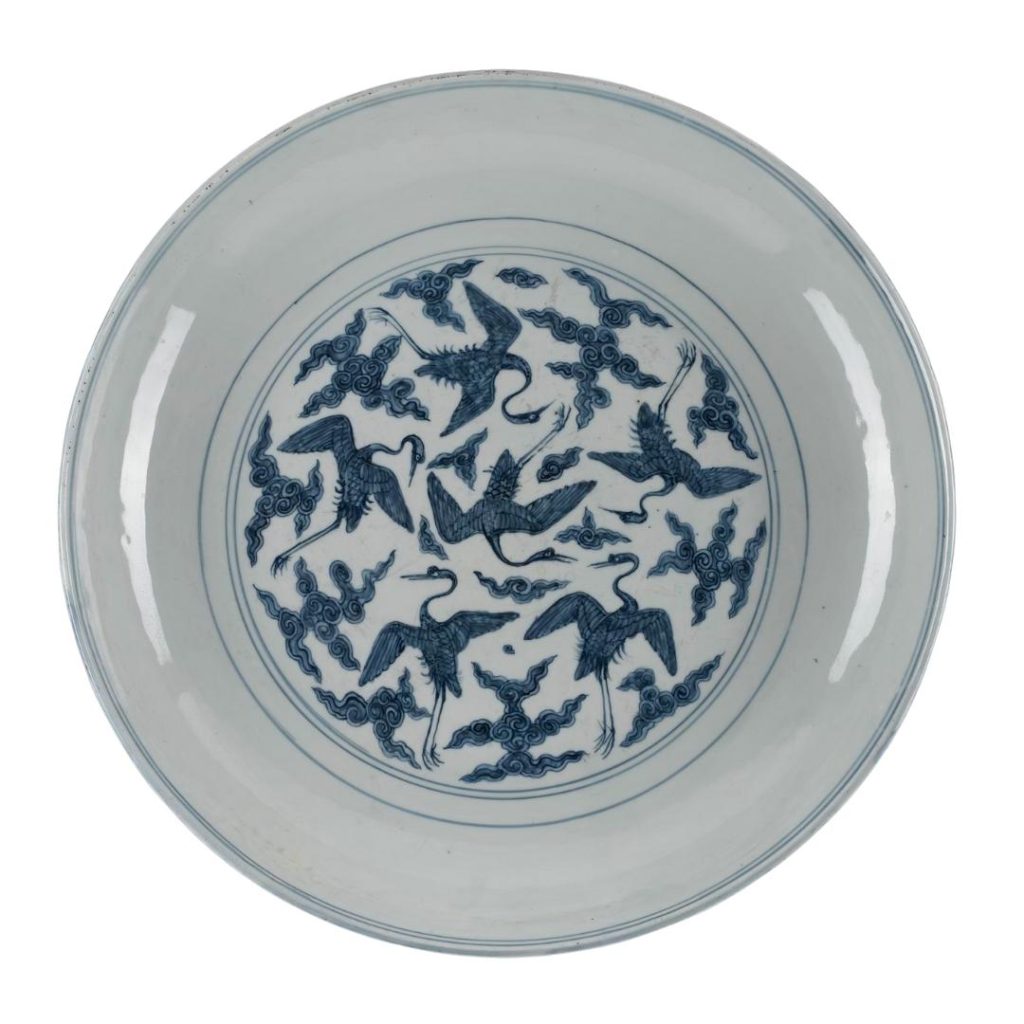
A great variety of porcelains were produced for the internal market, including table and storage wares, ornaments, altar vessels, funeral pieces and scholars’ stationery. Many others, often in different styles, were exported overseas from West and Southeast Asia to Europe, for purposes of both trade and diplomacy. Our collection represents this diversity of ceramic wares and the prosperity, highly developed skills, and adaptability of Ming ceramic artisans.
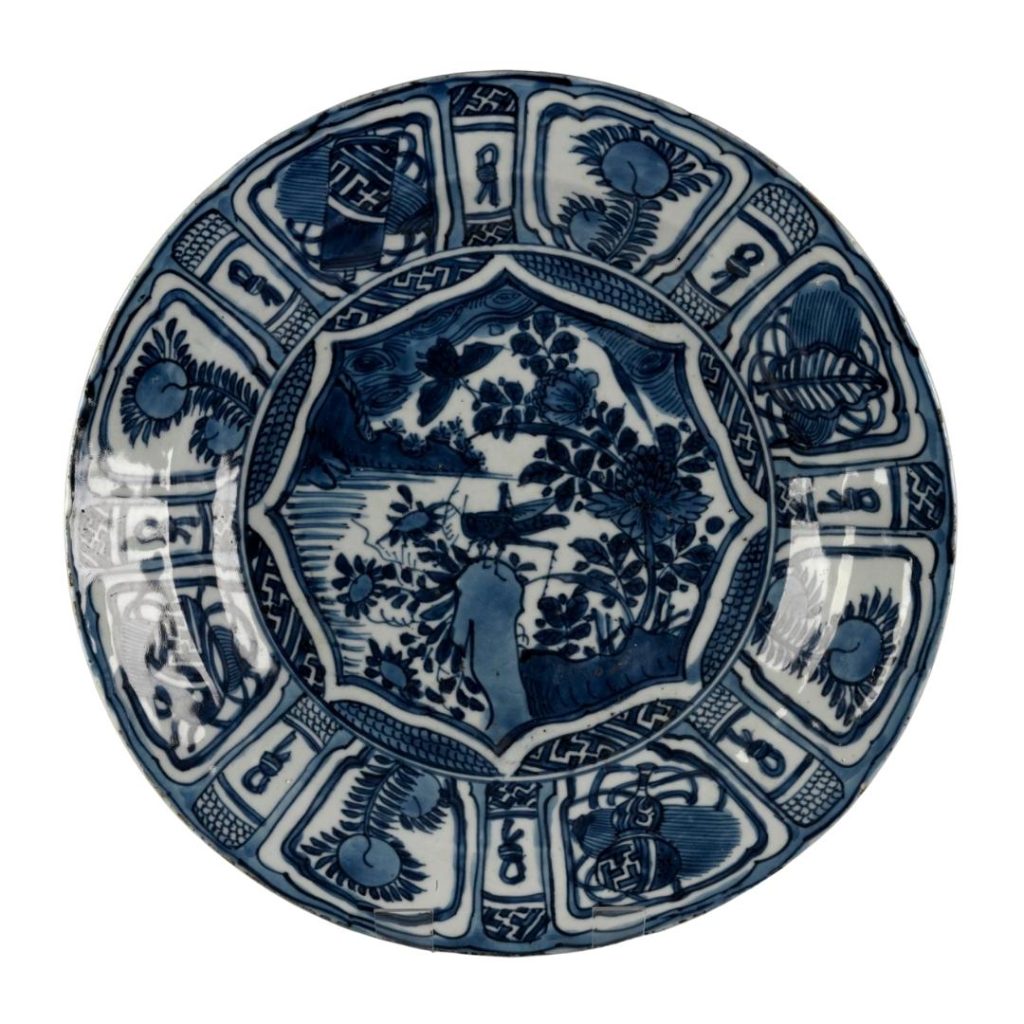
The two examples of large dishes (above) were both made at Jingdezhen, the porcelain capital. One was for export, while the other was made for Chinese elites. Can you tell which is which? Read on to find out if you’re right!
Let’s start with the motif. The dish on the first dish features underglaze blue decoration of six cranes flying among cloud scrolls. The execution of cranes is expertly done, painted freehand by highly skilled artisans and captures the graceful and elegant movements of the birds in flight or performing courtship dances. Both the cranes and cloud scrolls are well proportioned in relation to the flat space of the dish, enclosed by multiple circles of lines.
The second dish has a much busier decoration on its inner surface in darker underglaze blue. The central scene is of a grasshopper on a rock with flowers, leaves, and a butterfly in a garden setting. This is surrounded by an eight-lobed medallion with scale and maze patterns. The rim has eight large panels separated by narrow ones with depictions of knots. Stylised peaches are the main subject interspersed with auspicious motifs of gourds, leaf fans, drums and scrolls.
The main decorative subjects of both dishes – cranes, butterflies and peaches – all have associations with a desire for a long, peaceful and happy life. These were not merely decorative motifs, but were believed to have positive effects on their users’ lives, bringing longevity and blessings. The same motifs, however, would have been interpreted differently in the societies they were exported to.
But which one is which? The crane dish was made for Chinese elites and was a product of the official kiln in the Jiajing period (1522-1566). The grasshopper dish, made around 1600, is known as ‘Kraak’ ware, characterised by the radiating panels of ornaments and a preference for naturalistic subjects. Such large porcelain dishes with their light weight, durability and attractive decoration would be used and displayed in the residences of rulers and aristocrats. For example, large quantities of wares of this type are in the Topkapi Palace Museum collection in Turkey, having belonged to the Ottoman sultans.
Here are some more Ming ‘blue and white’ porcelains. Can you tell whether they were intended for domestic markets or for export? Take a look, then check your guesses at the bottom of this post.
Not just the perfect pieces
The Chinese ceramics you see on display in museums are usually carefully selected representative pieces in good condition to showcase their refinement, beauty and rarity. However, not all of the pieces acquired by National Museums Scotland would meet such high standards. A number of kiln wasters have been identified in the collection.
While they may not be ‘perfect’ pieces, they can actually be more insightful in understanding the elaborate production processes and many hazards and technical challenges artisans would have faced. Sometimes, such ‘failures’ resulted in new stylistic and technological development, becoming highly desirable, much like how trading cards with printing errors often become sought after by collectors.
One example of this is a Northern Song dynasty tea bowl from the Jian kilns in Fujian province. Its glaze was overfired. It was probably placed in the hottest part of the kiln, where the temperature exceeded what was desirable. Before the use of electric kilns in more recent times, the temperature of charcoal-fuelled kilns was entirely controlled and monitored through the experience and skill of artisans who learned the craft over generations.
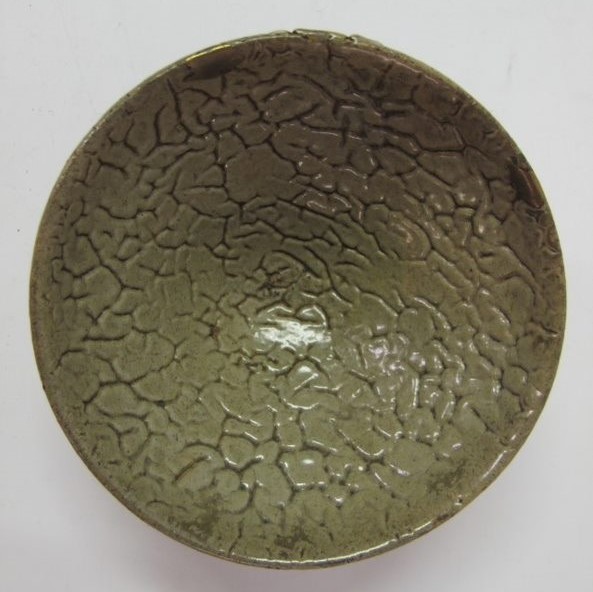
Let’s compare the kiln waster (above) with a successfully fired Jian bowl (below). Though the mis-fired glaze may not appear as smooth and dazzling as the other, this effect has become known as ‘shark-skin’ glaze. It later became hugely popular in Japan and had a long-lasting legacy on stoneware fashions.
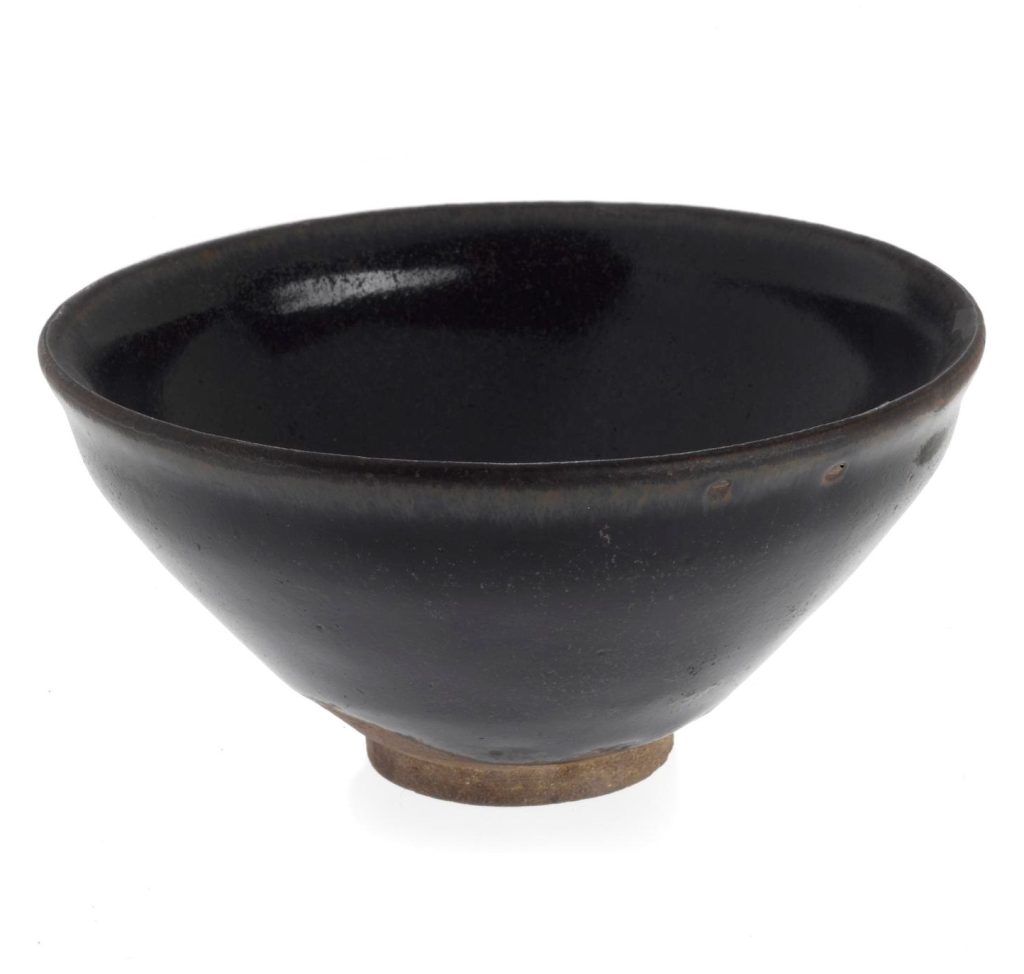
Tea bowls from the Jian kilns became popular among elites during the Northern Song period (960-1127), when the practice of tea drinking became extremely refined. The dark glaze provided a pleasing contrast with the white foams produced by powdered, whipped tea. These bowls also became highly sought after in Korea and Japan, particularly among monastic communities.
This Review project has only marked the start of our exploration of the rich stories within our Chinese ceramics collection. We look forward to sharing more in the near future. Meanwhile, a great variety of Chinese ceramics from different time periods are on display in the galleries of the National Museum of Scotland. Next time you visit, put your newfound knowledge to the test!
Answers for Ming ‘blue and white’ porcelains ID quiz:
Incense burner – domestic market
Porcelain dish – for export
Moon flask – domestic market.

